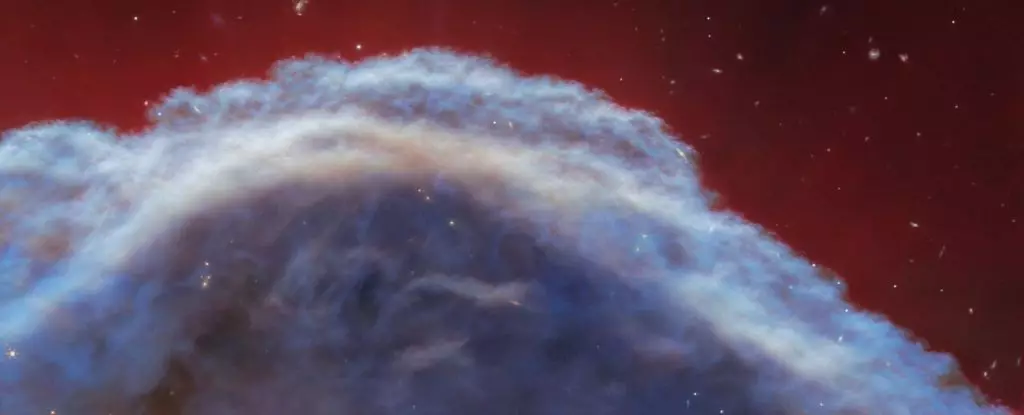The latest observations from the James Webb Space Telescope have uncovered exciting new details within the iconic space cloud known as the Horsehead Nebula. By utilizing mid- and near-infrared wavelengths, astronomers were able to capture never-before-seen features within this distant region of space.
Located approximately 1,300 light-years away, the Horsehead Nebula is a prominent structure within the Orion molecular cloud complex. Its distinctive shape, resembling a horse’s head, is formed by dense clouds of dust and gas. This dense material has collapsed under gravity, potentially harboring young stars in the process of formation.
Heated by the nearby complex known as Sigma Orionis, the Horsehead Nebula lacks an internal source of light. Instead, the intense radiation from the bright, young stars of Sigma Orionis illuminates the nebula, creating a stunning visual display. This unique combination of traits makes the Horsehead Nebula an ideal location for studying stellar nurseries.
The Impact of Ultraviolet Light
However, the intense radiation from neighboring stars has a significant impact on the surrounding environment. Far ultraviolet light causes photodissociation, breaking down molecules and creating a predominantly neutral interstellar medium. This process, along with photoevaporation, where gas becomes ionized and evaporates under powerful light, serves as critical mechanisms in the evolution of the nebula.
Insights from JWST Observations
The detailed imaging from the James Webb Space Telescope has provided researchers with a wealth of new insights into the inner workings of the Horsehead Nebula. By analyzing the emission from grains as small as 20 nanometers across and studying the scattering of light by larger particles, scientists can begin to unravel the complex chemistry and dynamics of this cosmic phenomenon.
Moving forward, further analysis of the data collected by the JWST will allow scientists to construct detailed models of the evolution of dust and gas within the nebula. By examining the chemical composition, size, and flow of particles, researchers hope to gain a deeper understanding of how these clouds evolve over time and how they ultimately contribute to the formation of new stars.
The recent observations of the Horsehead Nebula by the James Webb Space Telescope have shed new light on this iconic celestial structure. By uncovering intricate details and unraveling complex processes, astronomers continue to push the boundaries of our understanding of stellar formation and evolution in the vast reaches of space.

Leave a Reply